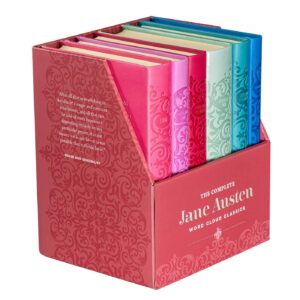By Christa Protano
If you have read your share of romance novels or seen many a rom-coms, you may wonder why the same storyline appears over and over again—and yet, you keep reading (or watching). Turns out, there is actually a method to the writing madness that authors and screenwriters have been following for years. It’s called the romantic trope, and at Canterbury Classics, you’ll find many.
So what exactly is a trope? Many genres feature this storytelling tool. But especially in romance novels, a trope is a plot or theme that lets the reader know where the story is headed. For example, a boy and a girl can’t stand one another, yet fall in love by the end of the book (enter the Enemies to Lovers trope). Or, a woman needs to decide which of her two suitors gets her heart. The trope? Love triangle, of course. The number of tropes out there are endless, with most novels featuring more than one. However, there are a few that have stood the test of time and we have the literary GOATs to thank. From Shakespeare to Austen to Brontë, the popular tropes featured in their beloved works have gone viral, setting present-day writers up for a better chance at success. If you’ve ever wondered how contemporary authors the likes of Christina Lauren, Emily Henry, and Jasmine Guillory get their inspiration, look no further than these Canterbury Classics.
Trope #1: Enemies to Lovers
In honor of the recent publication anniversary of one of the most popular and beloved British novels of all-time, we thought it appropriate to start with the Enemies to Lovers trope. In Jane Austen’s Pride, we quickly become engaged in the challenging relationship between Elizabeth Bennett and Mr. Darcy and eventually find ourselves rooting for them when they finally find romance together in the end. Why is this trope so appealing? Perhaps it’s because it shows how anyone can find love despite their flaws. Shakespeare also played around with this (some may say) toxic type of relationship in Much Ado About Nothing and Taming of the Shrew.
For a modern day twist on Enemies to Lovers, check out: The Hating Game, The Unhoneymooners, The Wedding Party, Beach Read.
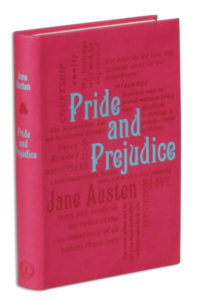
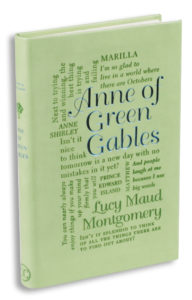
Trope #2: Friends to Lovers
In Lucy Maud Montgomery’s Canadian coming-of-age tale, we see Anne Shirley and Gilbert Blythe’s relationship unfold as they start out as childhood friends and eventually fall in love later in life. It’s the heartwarming Friends to Lovers trope, which is also featured prominently in Jane Austen’s Emma. Perhaps one of Austen’s most popular female characters, matchmaker Emma Woodhouse’s romantic match was always right under her nose, in the form of a certain friend, Mr. Knightly.
Some Friends to Lovers best-sellers of today: People We Meet on Vacation; Hook, Line, and Sinker; The Song of Achilles; Josh and Hazel’s Guide to Not Dating.
Trope #3: Forbidden Love
The most famous Forbidden Love story every told? You can’t argue with William Shakespeare’s Romeo & Juliet. While the English bard certainly didn’t invent the idea of forbidden love (you can find a lot of it in Greek mythology), his star-crossed lovers have influenced a ton of pop culture works (Twilight, anyone?). Give a reader all the tension and drama worthy of a Capulet-Montague feud and they’ll be hooked.
Drama, drama, drama—add these newer Forbidden Love books to your e-reader: Slammed; Red, White & Royal Blue; The Sweetest Oblivion; The Seven Husbands of Evelyn Hugo.
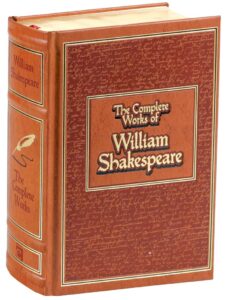
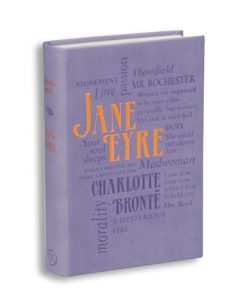
Trope #4: The Anti-Hero
Way before Taylor Swift wrote her hit song, Charlotte Brontë created one of fiction’s most iconic anti-heroes: Jane Eyre. This trope features characters who are often rebellious in nature, complex, and may or may not have a history of making not-so-great decisions. This particular dark romance features a young girl—plain, poor, and alone—who endures abuse, abandonment, and ridicule only to become a loving, compassionate young woman of great moral character. It remains Charlotte Brontë’s greatest achievement.
If you always find yourself rooting for the anti-hero, add these reads to your TBR stack: My Killer Vacation, Knight, Six of Crows.
Trope #5: Second Chances
Jane Austen also knows a thing or two about second chances. In Persuasion, we witness Anne and Captain Wentworth find their way back to one another after ending their engagement eight years prior. Likewise, the author also includes the trope in her very first novel, Sense and Sensibility, with regards to Marianne Dashwood and Colonel Brandon’s romantic relationship.
Believe in second chances? Turn the page on: Happy Place, Love and Other Words, The Bromance Book Club, Seven Days in June.
